In spite of the great uncertainties and pressures, both personal and professional, with which we have all contended over the past year, owing to the continued impact of the Covid-19 pandemic, staff and those affiliated to the Institute have maintained an impressive publication output.
Among these, Back in the Bag: Essays exploring artefacts in honour of David Wynn Williams, edited by Dot Boughton and ASE’s Kayt Hawkins, has recently been published through the SpoilHeap publication imprint.
UCL alumnus Jonathan Gardner’s A Contemporary Archaeology of London’s Mega Events: From the Great Exhibition to London 2012, which assesses the impact of the Great Exhibition of 1851, the 1951 Festival of Britain’s South Bank Exhibition and the London 2012 Olympic and Paralympic Games on London’s urban landscape, was also published this year through UCL Press.
The Dawn of Everything: A new history of humanity by the late David Graeber and the Institute’s Professor of Comparative Archaeology David Wengrow has also caused quite a stir. This has included both nomination as a finalist for the Orwell Prize for Political Writing 2022 and the no-less-significant honour of repeated advertisement-spotting in the wilds of London’s Tube network.
The Institute was also well represented at COP26 – or, more formally, the 26th United Nations Climate Change conference – in Glasgow last year. Key publication outputs were present in the form of Reimagining Museums for Climate Action, edited by the Institute’s Professor of Heritage Studies Rodney Harrison and Institute of Archaeology alumnus Colin Sterling, and Mobilising Museums for Climate Action: Tools, frameworks and opportunities to accelerate climate action in and with museums by Henry McGhie, both published by Museums for Climate Action.
Alongside her work as Research Co-Investigator on the AHRC-funded Radical Death and Early State Formation in the Ancient Near East project, Brenna Hassett’s latest book, Growing Up Human: The evolution of childhood, published by Bloomsbury, invites us to consider the underappreciated and uniquely human phenomenon of such extended childhood.
Following on from a brief obituary published in Archaeology International 23(1), José Oliver, the Institute of Archaeology’s Reader in Latin American Archaeology, has also published a detailed biography of our late colleague and Honorary Visiting Professor at the Institute of Archaeology, Dr Colin McEwan. Colin McEwan: The complete Americanist from Scotland is published open-access as part of the University of Maine’s Andean Past series.
Cladh Hallan: Roundhouses and the dead in the Hebridean Bronze Age and Iron Age is the first of two volumes reporting on excavations at this site on the Western Isles of Scotland. Written by the Institute’s Professor of British Later Prehistory Mike Parker Pearson, alongside Jacqui Mulville, Helen Smith and Peter Marshall, it has recently been published by Oxbow Books.
In London in the Roman World, a ground-breaking study by Dominic Perring, the Director of the CAA-ASE, recently published by Oxford University Press, a staggering array of evidence is marshalled to shed new light on one of the most researched cities on earth.
In their wide-ranging new edited volume, The Archaeology of Medicine and Healthcare, Naomi Sykes and the Institute’s Associate Professor in South Asian Archaeology Julia Shaw explore themes ranging from a bioarchaeology of Neanderthal healthcare to local resistance to colonial medical structures in South America to argue for greater integration between archaeology and both the medical and environmental humanities.
Francesca Fulminante, the Institute’s Associate Lecturer (Teaching) in Iron Age Mediterranean Archaeology, has edited a special issue of Childhood in the Past, entitled ‘Infants and children agency in past and present urban societies’.
Internal Institute publication imprints have also been fruitful. A new initiative by Papers from the Institute of Archaeology 1 has resulted in the publication of two sets of conference proceedings in the past year: Timeless Spaces: Between art, politics, and vandalism, a seminar on ancient and modern graffiti, edited by Rosamund Fitzmaurice (Institute of Archaeology), Tia Watkins (Institute of Archaeology) and Ioannis Nakas (University of Birmingham) and Ancient Lives, New Stories: Current research on the ancient Near East, edited by Xosé L. Hermoso-Buxán (Institute of Archaeology) and Mathilde Touillon-Ricci (SOAS; British Museum). The Institute’s collaboration with BAR Publishing has also seen the publication of two further unaltered PhD theses: Laura Adlington’s Making a Medieval Stained Glass Window: An archaeometric study of technology and production and Raffaella Cecilia’s Inclusive Visions: The museum experience of young blind and partially sighted visitors. In addition, the Institute’s new World Archaeology series, published by Bloomsbury Academic, has yielded its first publication, Tracing Gestures: The art and archaeology of bodily communication, edited by UCL alumni Amy Maitland Gardner and Carl Walsh.
Dot Boughton and Kayt Hawkins, eds. 2022. Back in the Bag: Essays exploring artefacts in honour of David Wynn Williams. Portslade: SpoilHeap Publications.
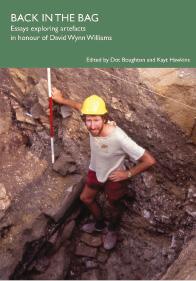
This volume brings together a series of papers in memory of David Wynn Williams. Written by colleagues and friends, the papers relate to their experiences of working with and alongside David, both in Surrey and within the wider world of small finds research. The papers cover a range of objects from the Bronze Age through to the nineteenth century, and also include an introduction to his substantial art portfolio.
Jonathan Gardner, 2022. A Contemporary Archaeology of London’s Mega Events: From the Great Exhibition to London 2012. London: UCL Press.
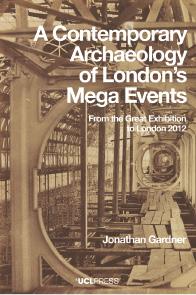
Drawing on various theoretical and methodological frameworks and a rich array of sources, this book explores the traces of London’s most significant modern ‘mega events’ and their diverse temporal relationships.
Gardner argues that, though these spectacles are only open briefly, they must be seen as long-lived and persistent, permanently reshaping the materials, landscapes and populations of their host cities. Three major London mega events are compared, demonstrating the great potential of contemporary archaeology in re-examining recent processes of urban transformation. Available to download for free at: https://doi.org/10.14324/111.9781787358447.
David Graeber and David Wengrow, 2021. The Dawn of Everything: A new history of humanity. London: Penguin.
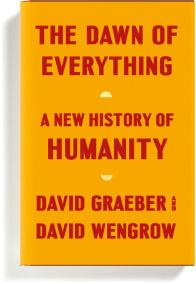
The Dawn of Everything explores the impact of Indigenous critiques upon European modes of political thought during the Age of Enlightenment and shows how this necessitates a wider rethinking of global history. The book uses archaeological and anthropological evidence to challenge Eurocentric frameworks of analysis in the social and historical sciences (for example, relating to the origins of social inequality, the nature of democracy and the state and the rise of ‘the West’).
Rodney Harrison and Colin Sterling, eds. 2021. Reimagining Museums for Climate Action. London: Museums for Climate Action.
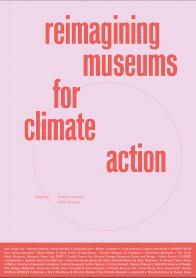
Published as part of a series, including Henry McGhie’s Mobilising Museums for Climate Action: Tools, frameworks and opportunities to accelerate climate action in and with museums, on the occasion of the Reimagining Museums for Climate Action exhibition at the Glasgow Science Centre, in advance of and during COP26, with the generous support of the Arts and Humanities Research Council (AHRC), part of UK Research and Innovation (UKRI). Available to download for free at: www.museumsforclimateaction.org.
Brenna Hassett, 2022. Growing Up Human: The evolution of childhood. London: Bloomsbury.
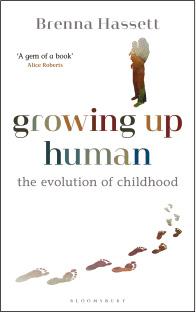
Tracking deep into our evolutionary history, anthropological science has begun to unravel one particular feature that sets us apart from the many, many animals that came before us – our uniquely long childhoods. Growing Up Human looks at how we have diverged from our ancestral roots to stay ‘forever young’ – or at least for what seems like forever – and how the evolution of childhood is a critical part of the human story.
José Oliver, 2021. Colin McEwan: The Complete Americanist from Scotland. Andean Past Monograph 4. Orono: Department of Anthropology, University of Maine.
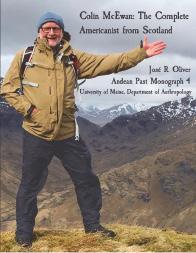
This monograph is a biography of Colin McEwan (1951–2020), Curator and Head of the Americas section in the Department of Africa, Oceania and the Americas of the British Museum (1993–2012), Director of Pre-Columbian Studies at Dumbarton Oaks (2012–2019) and Honorary Professor at the Institute of Archaeology. It reflects on his substantial contributions to the archaeology and anthropology of Latin America and shows how his life experiences and education shaped his persona and ultimately forged the consummate scholar and Complete Americanist he became. Available to download for free at: https://digitalcommons.library.umaine.edu/andean_past_special/11.
Mike Parker Pearson, Jacqui Mulville, Helen Smith and Peter Marshall, 2021. Cladh Hallan: Roundhouses and the dead in the Hebridean Bronze Age and Iron Age, Part I: Stratigraphy, spatial organisation and chronology. Oxford: Oxbow Books.
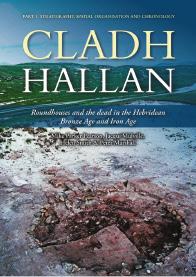
In this first of two volumes, the archaeological evidence of a long sequence of settlement and funerary activity from the Beaker period (Early Bronze Age c. 2000 bce) to the Early Iron Age (c. 500 bce) at the unusually long occupied site of Cladh Hallan on South Uist in the Western Isles of Scotland are presented. Cladh Hallan’s remarkable stratigraphic sequence, preserved in the machair sand of South Uist, includes a unique 500-year sequence of roundhouse life in Late Bronze Age and Iron Age Britain, as well as the first evidence for mummification in Bronze Age Britain.
Dominic Perring, 2022. London in the Roman World. Oxford: Oxford University Press.
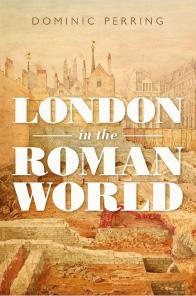
‘The most comprehensive coverage of Roman London – Londinium – to date by the foremost authority in this sphere of Romano-British archaeology … an essential handbook for Roman London and Roman Britain.’ Mark Merrony
‘A meticulous and exhilarating account of London’s early history which often leaves the reader dazzled by the way the evidence for the life of the city has been brought together and presented to reveal its past.’ Armand D’Angour
London in the Roman World draws on the results of the latest archaeological discoveries to describe London’s Roman origins. It presents a wealth of new information from one of the world’s richest and most intensively studied archaeological sites, along with a host of compelling ideas concerning its economic and political history. This original study follows a narrative approach, setting archaeological data firmly within its historical context.
Naomi Sykes and Julia Shaw, eds. 2022. The Archaeology of Medicine and Healthcare. Abingdon: Routledge.
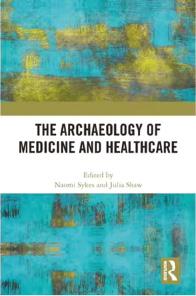
The maintenance of human health and the mechanisms by which this is achieved are fundamentals of human societies. However, archaeological investigations of medicine and care have tended to examine the obvious and explicit manifestations of medical treatment as discrete practices that take place within specific settings, rather than as broader indicators of medical worldviews and health beliefs. This volume, drawing together chapters originally published as a special issue of World Archaeology, highlights the importance of medical worldviews as a means of understanding healthcare and medical practice in the past.
Francesca Fulminante, ed. 2021. Childhood in the Past 14 (2).
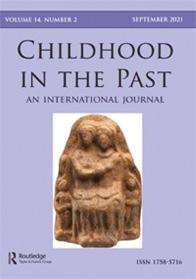
This volume stems from a conference organised by Francesca Fulminante, Paul Howard Jones and Jenny Ingram in Bristol in September 2019, with a focus on interdisciplinary approaches to the lives of infants and children in past and present urban societies. The special issue addresses the research oversight in the connection between infancy/childhood and urbanisation, and points to recent directions in various disciplines, including archaeology, to demonstrate the impact of child rearing on the prosperity and survival of communities and, indeed, of the whole of society.
PIA conference proceedings.
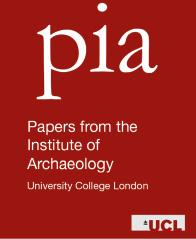
Papers from the Institute of Archaeology (PIA) is a peer-reviewed, open-access journal that publishes research on all aspects of archaeology, museum studies, cultural heritage and conservation in the form of research papers and short reports, as well as reviews of conferences, exhibitions and books. Run by Institute of Archaeology doctoral students, the core mission of PIA is to provide authors with experience in publishing articles early in their careers. PIA therefore places great emphasis on the provision of peer review feedback and editorial assistance at every step of the publication process.
As part of this mission, continuing an initiative by its previous editor of PIA Chloë Ward (Ludwig-Maximilians-Universität, Munich), PIA published the second and third instalments of a new conference proceedings series in 2022. The fourth and fifth instalments are to this day in progress.
Volume 31, Issue 1, 2021. Special Issue: Timeless Spaces 2019 Conference Proceedings.
Timeless Spaces: Between Art, Politics, and Vandalism, a Seminar on Ancient and Modern Graffiti was a conference held at the Institute of Archaeology, UCL on 16 March 2019, organised by Rosamund Fitzmaurice (Institute of Archaeology), Tia Watkins (Institute of Archaeology) and Ioannis Nakas (University of Birmingham). The papers in this special issue comprise the proceedings of that conference and have been edited by the organisers, with the support of Papers from the Institute of Archaeology.
Volume 33, Issue 1, 2022. Special Issue: Ancient Lives, New Stories 2018 Conference Proceedings.
Ancient Lives, New Stories: Current Research on the Ancient Near East was a conference held in London at the British Museum between 1 and 2 December 2018, organised by Xosé L. Hermoso-Buxán (Institute of Archaeology) and Mathilde Touillon-Ricci (SOAS; British Museum). The papers in this special issue comprise the proceedings of that conference and have been edited by the organisers, with the support of Papers from the Institute of Archaeology.
BAR UCL Institute of Archaeology PhD Series
In 2019 the Institute launched a new series with BAR Publishing to publish largely unaltered PhDs. This substantial series promotes the Institute’s outstanding postgraduate research programme across the theory and practice of archaeology, conservation and heritage. We are delighted that BAR Publishing has won the prestigious IPG Academic and Professional Publisher of the Year 2022 award.
Two titles have been published since Archaeology International 24(1) and a further three volumes are being prepared for publication. A full list of all our titles published in the BAR UCL Institute of Archaeology PhD Series can be found at: https://www.ucl.ac.uk/archaeology/about-us/institute-archaeology-publications.
Laura W. Adlington, 2022. Making a Medieval Stained Glass Window: An archaeometric study of technology and production. BAR British Series, No. 671. Oxford: BAR Publishing.
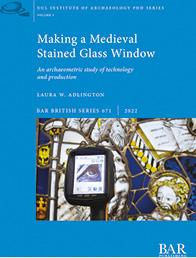
Medieval stained-glass windows are relatively untapped sources of information about medieval technology and production. This volume presents a comprehensive study of York Minster’s Great East Window (1405–8), investigating glass-making technology and provenance and glass-painting craft organisation. Using historical documentation, art historical information and meta-analysis of legacy data, it explores relationships between York Minster and glass suppliers, the skills of medieval glass-makers and details of the window workshop and the work of different craftsmen.
Raffaella Cecilia. 2022. Inclusive Visions: The museum experience of young blind and partially sighted visitors. BAR British Series, No. 672. Oxford: BAR Publishing.
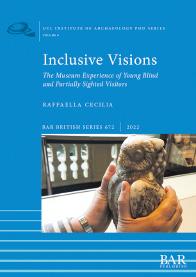
Inclusive Visions explores the embodied experience, situated interactions and identities of young blind and partially sighted visitors in the museum space. It details the visit experience of such participants at three London museums: the V&A Museum, the Wallace Collection and the Museum of London. Using qualitative audio, fieldnotes and video-based research methods, it explores how meaning-making and identity are formed and sets these processes within a holistic context.
The World Archaeology Series and the Critical Cultural Heritage Series
The Institute of Archaeology is proud to announce the launch of two new series in partnership with Bloomsbury Academic: The World Archaeology Series, General Editor Ruth Whitehouse and the Critical Cultural Heritage Series, General Editor Beverley Butler.
The first of these, the World Archaeology Series, promotes a programme that includes theory, research, pedagogy, reference material and good practice of the highest quality across archaeology, cultural heritage and cognate disciplines, including ethnographic work and conference proceedings. The second, the Critical Cultural Heritage Series, specifically asks new questions about what heritage is and does and why it is important. It seeks out as-yet-unconceptualised notions of heritage that traverse disciplinary boundaries and draws on perspectives from a similarly wide range of material.
Both series welcome submissions for authored and edited volumes from scholars and practitioners worldwide. So far one title has been published in the World Archaeology Series, with another about to be refereed and three new proposals expected imminently. In the Critical Cultural Heritage Series one volume is about to go into production and another two manuscripts are in preparation.
The Institute has been publishing prestigious books since 1977. In that time over 90 titles have been published by, successively, the Institute of Archaeology, UCL Press, Left Coast Press and Routledge, part of the Taylor & Francis group. A full list of these older titles, now distributed by Routledge, can be found at: https://www.ucl.ac.uk/archaeology/about-us/institute-archaeology-publications.
Amy Maitland Gardner and Carl Walsh, eds. 2022. Tracing Gestures: The art and archaeology of bodily communication. London: Bloomsbury Academic.
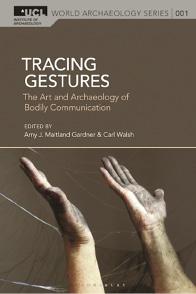
This volume explores both how meaning was communicated through bodily actions and how archaeologists can trace the symbolism and significance of ancient gestures, ritual practices and bodily techniques through the material remnants of past human groups. Contributions from leading researchers in Aegean, Mediterranean, Mesoamerican, Japanese and Near Eastern archaeology, and the case studies they present, offer new and valuable perspectives on the nature of bodily communication across space and time.

